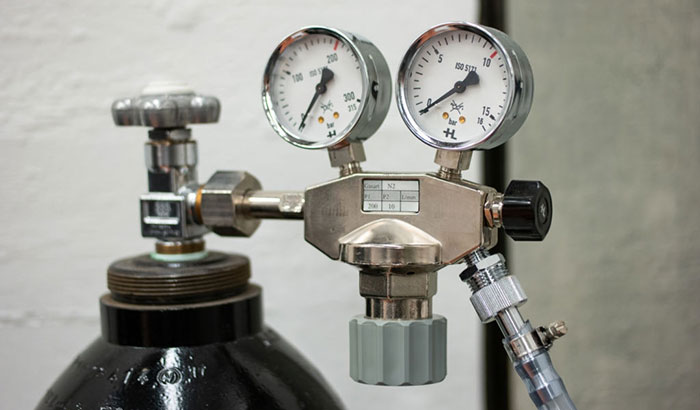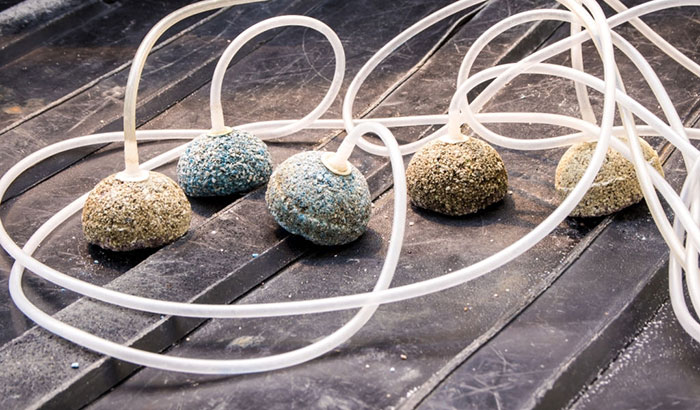A planted aquarium will thrive better if it features a CO2 (carbon dioxide) tank because plants need carbon dioxide for photosynthesis. However, one primary point of contention among aquarists is determining which metal is better equipped to handle carbon dioxide. This article focuses on aluminum vs. steel CO2 tanks; we will discuss their differences and which is better for aquarium use.
Our discussion will go through their resistance to rust, durability, cost efficiency,
Contents
Aluminum vs. Steel – Their Differences and Advantages
When functioning as tanks, there are no significant differences between aluminum and steel carbon dioxide tanks. They both hold and dispense CO2, and they do it equally to each other. So, we can’t compare them effectively when only talking about function.
But other factors such as their affordability, maintenance level, resistance to rust, and durability can help you decide which of them is better.
Aluminum CO2 Tank
Let’s put aluminum CO2 tanks under our scrutiny first.
Durability
Aluminum is a highly durable metal, especially when you factor in its weight. For its lightweight quality, its durability is astonishing, which is why cars, planes, trains, and many boats use aluminum as a primary construction material. Durability and lightness are the two core desirable qualities of aluminum.
However, most aluminum CO2 tanks don’t make the aluminum shell thick enough to prevent dents from forming. It might take a fair amount of force to dent an aluminum CO2 tank, but possible.
As long as you don’t mind dents forming if you accidentally smash or drop the aluminum tank, it’s still a win in terms of durability.
Rust Resistance
Aluminum does not rust, which is helpful for a water-rich environment. But the substance does corrode when exposed to water. Oxidation is a natural result of any metal exposed to moisture for an extended period. However, aluminum oxidation is actually a good thing.
When aluminum oxidizes, it forms aluminum oxide, which does not destroy the metal like other forms of oxidation do. Aluminum oxide forms not within the metal but on it. It creates a layer that’s thin, transparent, and hard. In other words, aluminum oxidation forms a protective layer over your tank!
Since aluminum oxide is colorless and protects the tank, it is beneficial rather than harmful.
Maintenance Level
In my opinion, the maintenance level of an aluminum CO2 tank is moderate. You don’t have to protect it from rust, which is a very good thing. But you have to protect it from smashing, dropping, or other external forces because it might dent and eventually break.
But as long as you don’t always move the tank or move things around it, you don’t expose it to potential damage.
Affordability
Aluminum items are generally more expensive than steel. The same is true of CO2 tanks. An aluminum CO2 tank with a capacity of 20 lbs can cost more than $200, while a steel CO2 tank of the same capacity costs less than $100.
Aluminum costs more than steel because aluminum is rarer.
Steel CO2 Tank
Now let’s see how a steel CO2 tank holds.
Durability
Compared to aluminum, steel is way more durable. It is a lot less vulnerable against weight, force, or heat. It does not easily bend or get dents.
However, it is a lot heavier than aluminum. If you don’t mind that much, steel might be a good option for you unless the other factors convince you otherwise.
Rust Resistance
Steel is an alloy (metal combination) of iron and carbon. And because iron is highly susceptible to rust, steel rusts. Rusting is probably the biggest concern for those who own a steel CO2 tank because the device is always around rust-inducing water. If you are not careful, your steel CO2 tank may rust vehemently.
Though steel is incredibly durable, rust weakens it mercilessly.
Maintenance Level
Because steel rusts when in the presence of moisture for a long time, I believe a steel CO2 tank is a high maintenance item. You would have to protect your tank from water by wiping it regularly or using desiccant drying agents. Another protective measure is coating the steel with zinc because zinc corrodes a lot slower than steel.
But the best ways to maintain your steel CO2 tank are applying oil, dry coating, or powder coating your steel CO2 tank with anti-rust compounds.
Affordability
Steel is a lot more affordable than aluminum. Steel costs around three times less than aluminum in raw materials, two times less in conversion costs, and only about 84% of aluminum’s assembly costs.
As I already discussed above, a steel CO2 tank is a lot more affordable than an aluminum variant.
So, Which is Better?
Deciding which is better between an aluminum and steel CO2 tank is a matter of personal preference. But in my opinion, steel trumps aluminum because it is more durable and affordable by a lot. Though steel is harder to maintain, I think that with suitable materials, it won’t be that big of a deal.
Conclusion
Let us summarize this aluminum vs. steel CO2 tank dispute. Aluminum is very durable for its lightweight quality. It is rust-resistant and will actually form a protective layer when exposed to moisture for a long time. But it is very costly. Steel is a lot more durable and affordable than aluminum. But it is prone to rust; you have to maintain it well to make it last as long as possible.


